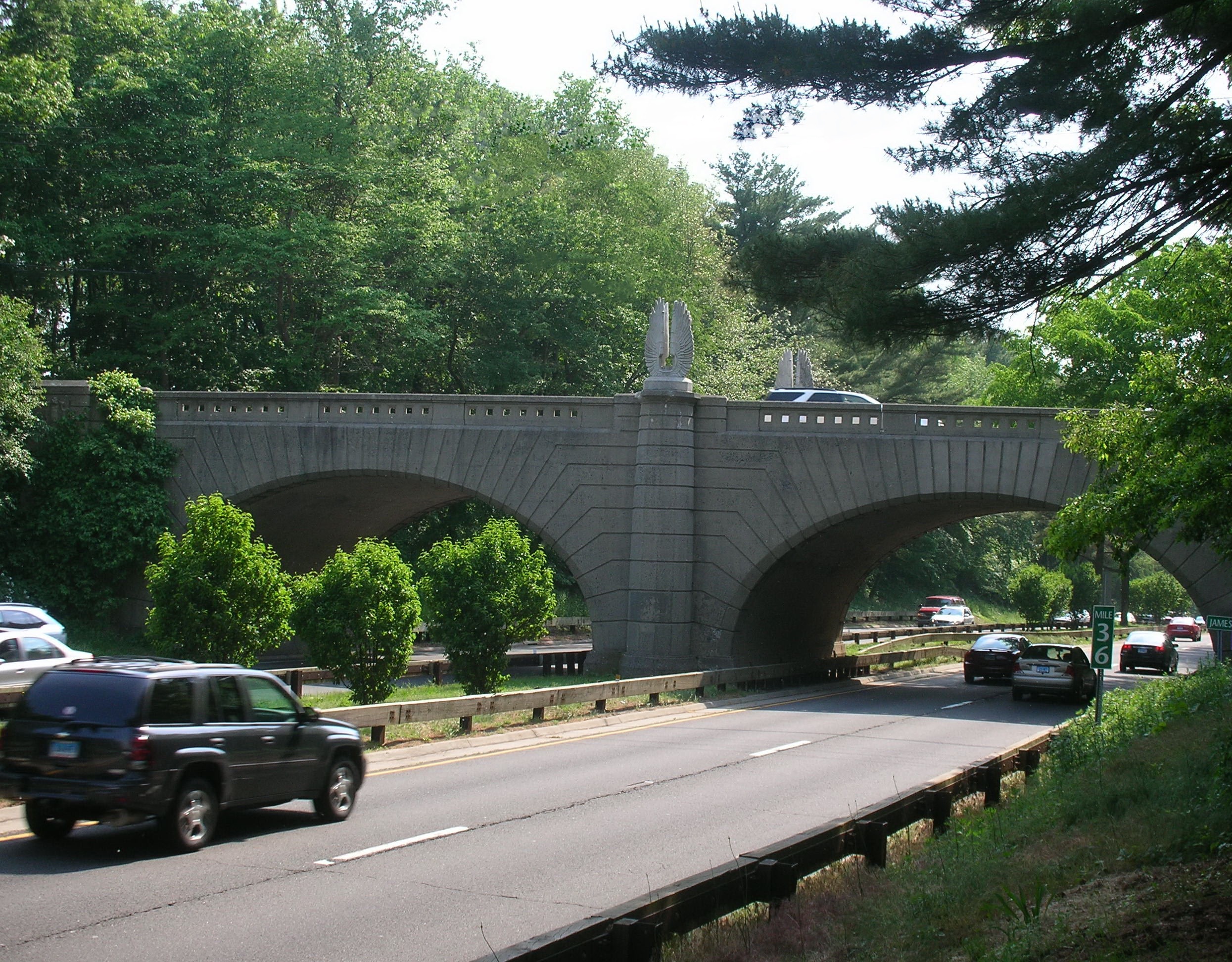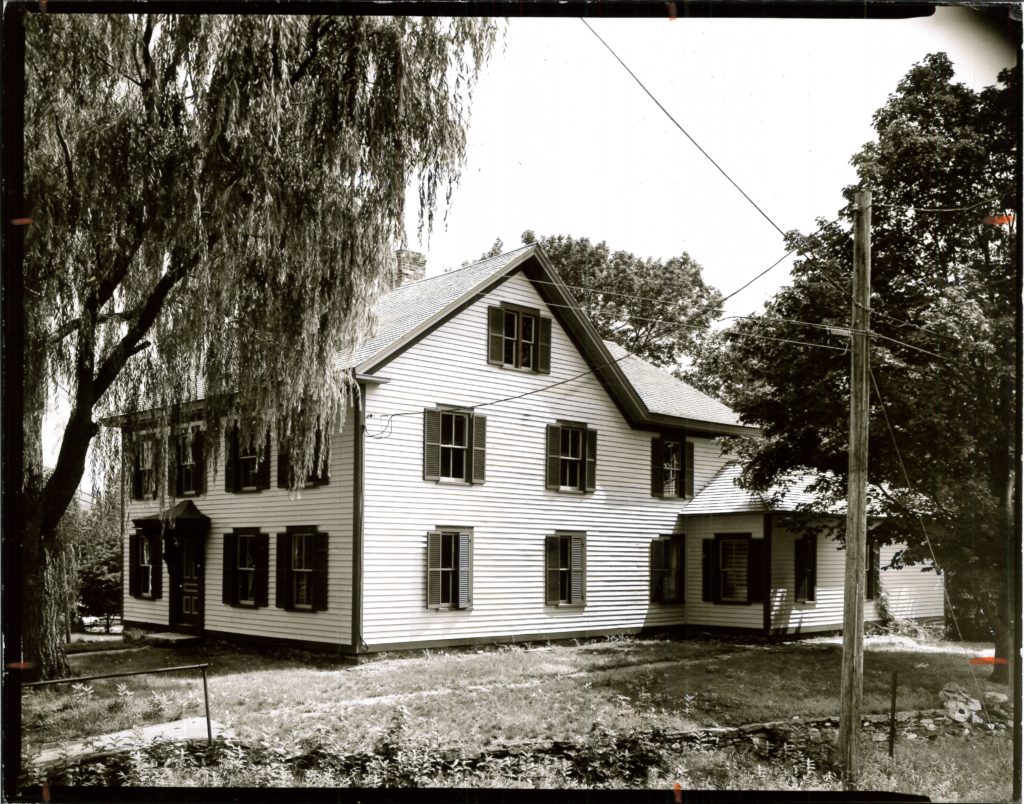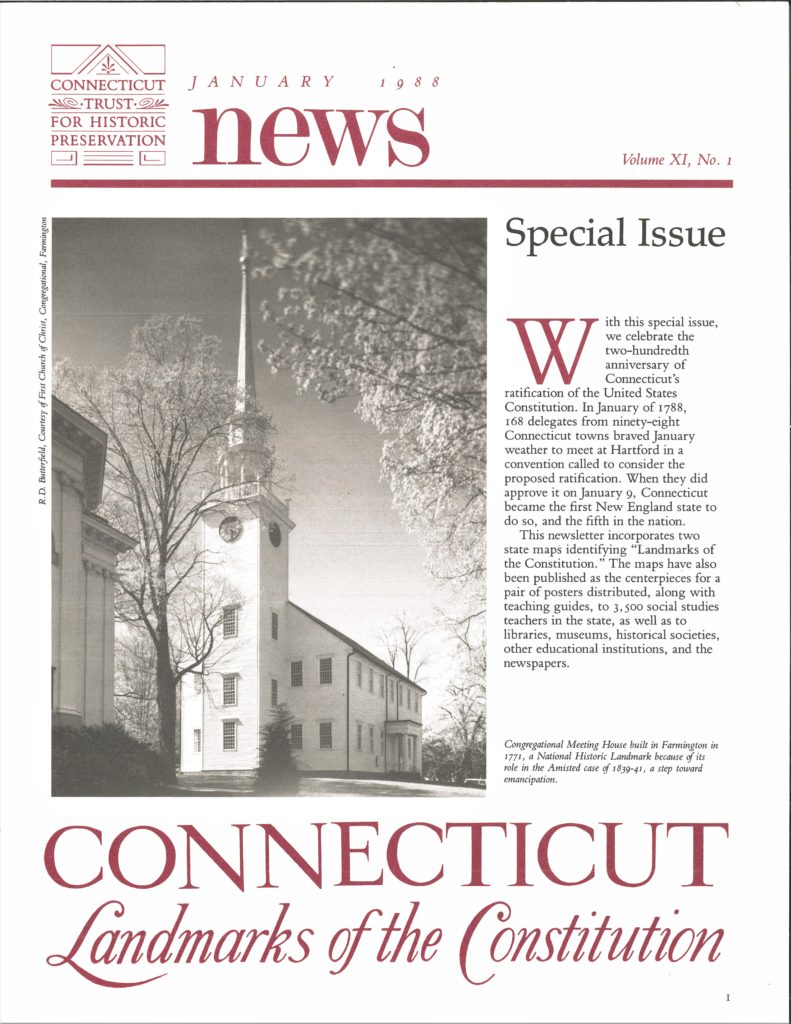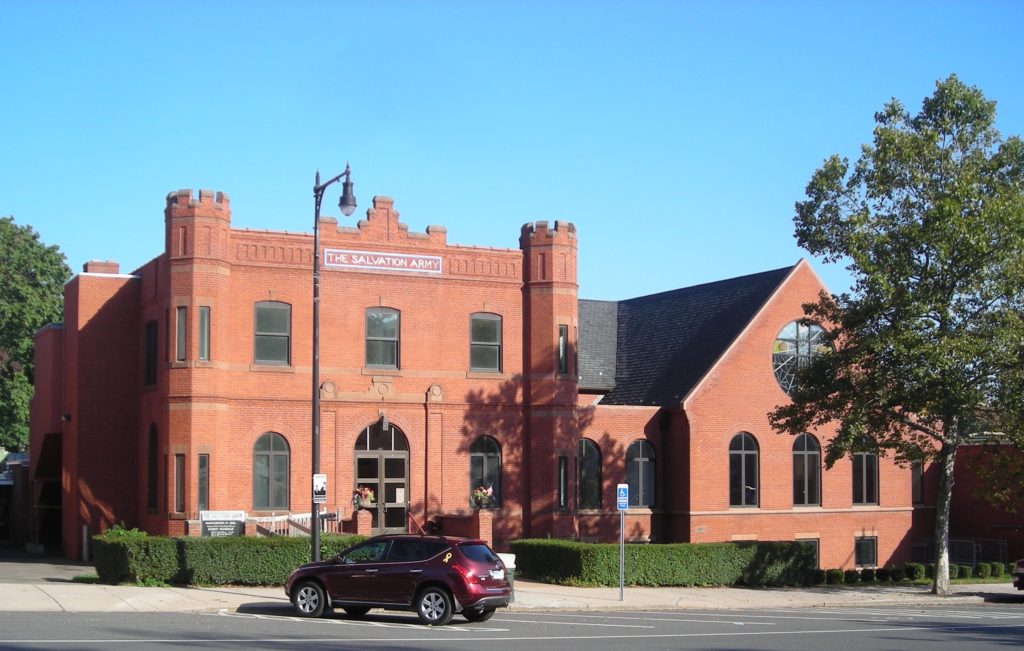
The Merritt Parkway, one of Preservation Connecticut’s longest-running projects. Merritt Parkway Conservancy
By Christopher Wigren
(c) Connecticut Explored Inc. Spring 2020
Subscribe/Buy the Issue!
Editor’s note: “Connecticut Trust” or “the Trust” is used for past events and Preservation Connecticut is used for programs that continue into the present.
In January 2020 The Connecticut Trust for Historic Preservation announced its new name: Preservation Connecticut. The organization traces its beginnings to the 1970s, when leaders of the Connecticut Historical Commission, the forerunner to today’s State Historic Preservation Office, conceived of a private partner for the commission. This action paralleled the national movement that, since its beginnings in the 1960s, has relied on both public and private entities to do its work.
The Historical Commission’s chairman, Harlan H. Griswold of Woodbury, gathered a group of like-minded collaborators to launch the private nonprofit, and on February 12, 1975, the board of trustees held its first meeting. Later that year the Connecticut General Assembly passed legislation that formally chartered the Connecticut Trust for Historic Preservation “to stimulate citizens throughout the private sector to preserve, restore and reuse historic architecturally significant buildings and sites…so that present and future generations may live within and enjoy our common heritage.”
The founders organized the Trust to operate in three primary areas, which have remained remarkably constant for more than four decades: real estate, advocacy and technical service, and education.
Real Estate Programs
Preservation is about real estate, which can be bought and sold. A primary reason for establishing the Trust was to create a revolving fund—that is, buy an endangered property, sell it to a preservation-minded owner, and use the proceeds to buy the next property.
Raising funds to buy often-expensive Connecticut real estate, however, was not easy, and the transactions were inherently risky. The Trust’s first purchase arose when the Norwich Historic District Commission turned down an application by its owner to demolish the Lord Tavern in Norwichtown. After the Connecticut Supreme Court upheld the denial in June 1976, the Trust bought the building with grant funds it had received from the National Park Service. The exterior was restored, and the tavern was sold in 1979 with covenants to ensure its preservation. Forty years later, it still stands, facing the Norwichtown Green.

Lord Tavern, Norwich, 1976. The newly established Connecticut Trust for Historic Preservation’s first major initiative was its purchase, restoration, and sale, with protective covenants. photo: Thomas Hahn, courtesy of Preservation Connecticut
Other accomplishments followed. A grant in 1977 averted demolition of Lincoln House, designed by Cass Gilbert for social services agencies in Waterbury. In 1984, a loan guarantee helped the Trust for Public Land buy part of impressionist artist J. Alden Weir’s farm in Wilton, which eventually became Connecticut’s first National Historic Site.
The Trust’s real estate activities got a boost when the state allocated $500,000 for the revolving fund, to be matched by private donations. Although the full match was never raised, several successful projects ensued, beginning in 1985. Loans made possible the rehabilitation of houses in Bridgeport, East Haddam, and New Haven, among other places, and in Darien the Trust bought the Benjamin Weed house, built in 1785, to avert its destruction. But in the real estate downturn of the early 1990s several projects lost money, and with no new infusions of capital the revolving fund was shut down.
The Trust embarked on the revolving fund approach again in the 2010s, with encouragement and funding from The 1772 Foundation. Soon, however, it became apparent that a more effective approach was to use the expertise of a community development financial institution, Capital for Change, which now provides loan management while the Trust, now Preservation Connecticut, identifies and evaluates projects.
Another way to protect historic places is through preservation easements, which are private agreements with owners who promise to maintain their historic properties and give Preservation Connecticut the power to approve alterations. As of 2020, Preservation Connecticut holds easements on 38 properties across the state, ranging from Colonial farmhouses to 19th-century worker housing to 20th-century commercial buildings.
Advocacy and Technical Assistance
From the beginning, the Trust has fielded calls from property owners, community groups, municipal officials, and others seeking technical and strategic assistance. One long-running project has been the Merritt Parkway, built in the 1930s and beloved for its verdant landscape and inventive bridges. When the Connecticut Department of Transportation (DOT) floated proposals for widening the parkway in 1990, the Trust stepped up to oppose the plans. Newsletter articles advocated preserving the Merritt, staff successfully nominated it to the National Register, and a conference gathered supporters. Facing widespread opposition, DOT changed course and embarked instead on a program of safety improvements and landscape and bridge restoration. In 1999 the Trust facilitated the creation of the Merritt Parkway Conservancy, a nonprofit that works with DOT to protect and enhance the parkway. Preservation Connecticut remains involved through participation on DOT’s Merritt Parkway Advisory Committee and ongoing partnership with the Conservancy.
Since 2001 Preservation Connecticut has increased its presence in every corner of Connecticut through field-service staff, called Circuit Riders. Initially a partnership with the National Trust, and now with the State Historic Preservation Office, the program sends preservation professionals into the field to provide advice, information about resources and strategy, and technical expertise. The program began with a single Circuit Rider working in the Hartford area and quickly expanded to cover the whole state, adding a second, and then a third Circuit Rider.
In one of the program’s first accomplishments, Circuit Rider Brad Schide recruited an architect to show the Manchester Salvation Army that it could renovate and expand its historic citadel rather than demolish and replace the structure. Circuit Riders also helped the City of Hartford research and draft its municipal preservation ordinance, passed in 2005, and in 2006 led the effort to block demolition of Modernist architect Paul Rudolph’s Micheels house in Westport. Although the latter effort failed, it helped the Trust hone its strategies for using the Connecticut Environmental Protection Act to prevent unreasonable demolition of structures listed on the National Register of Historic Places, leading to successes—typically in partnership with the state—including in Wallingford, Southington, and Milford.
Passage of the Community Investment Act in 2005 (with advocacy by the Trust) provided more stable funding for historic preservation, along with affordable housing, open-space acquisition, and farmland protection. Preservation Connecticut receives an annual appropriation through the act; in addition, it has benefited from increased funding to the State Historic Preservation Office through SHPO grants for surveys and re-granting programs that complement the Circuit Rider program.
Preservation Connecticut’s grants have funded organizational preservation planning and feasibility studies, community revitalization, and small restoration projects. In addition, Preservation Connecticut administers restoration grants for The 1772 Foundation. The Circuit Riders have increased the effectiveness of these grants by working closely with applicants to define realistic projects and craft successful applications.
Education and Awareness
Education programs have been key to making the public case for preservation. Since 1978 the organization’s newsletter, now called Preservation Connecticut News, has reported on activities throughout the state and published special issues dedicated to topics such as archaeology, landscape preservation, outdoor sculpture, and African American and Native American history.
Other publications to educate preservationists have included Handbook of Historic Preservation Law (1984), How to Care for Your Old House (1987), and Handbook for Historic District Commissions and Historic Property Commissions in Connecticut (2010). In 2018 the Trust published Connecticut Architecture: Stories of 100 Places. The first comprehensive illustrated history of Connecticut’s built environment, the book is intended to support the organization’s work by expanding knowledge of and appreciation for the state’s architecture.

Since 1978 Connecticut Preservation News has reported on preservation activity and issues across the state.
Conferences organized by Preservation Connecticut expand the preservation network and provide information about emerging issues. In the 1990s, as preservationists nationwide increasingly focused on planning topics, the Trust presented conferences and workshops about sprawl, road design compatible with historic settings, and preservation in the suburbs. Most recently, Preservation Connecticut co-sponsored a conference on sustainability at the UConn School of Law.
In the 1980s the Trust began conducting surveys to identify historic places for further preservation activity, including theaters and New Haven’s Dwight neighborhood. In the 1990s a survey of historic town greens grew out of the interest in preservation planning, and in 2001 the information was made available to the public through a website, towngreens.com. This project established a pattern that would be repeated with surveys and websites for barns (connecticutbarns.org), industrial sites (connecticutmills.org), and sites associated with artists and writers (website forthcoming) and has led to new state register nominations, a tourism trail, and grants for feasibility studies.
To recognize significant preservation achievements and inspire others, Preservation Connecticut has an awards program. Over the years the program has embraced a wide range of projects and honored preservation professionals and young preservationists. In partnership with the State Historic Preservation Office, Preservation Connecticut recognizes particularly significant preservation accomplishments through an award named for Harlan Griswold. Beginning in 2019, another joint award, this one with the Connecticut chapter of the American Institute of Architects, honors architectural excellence in preservation work.
People and Partnerships
From its first hire in 1976, Preservation Connecticut has relied on a dedicated professional staff and volunteer trustees and on partnerships with community organizations, individuals, and governmental bodies, most notably the State Historic Preservation Office. As it approaches its half-century, Preservation Connecticut is updating its public face to engage a new generation in the preservation movement. This has begun with its new name, a new logo, and a new website at preservationct.org officially unveiled in January 2020. At the same time, the organization is strengthening its message that historic places are valuable not only in their own right but as expressions of identity, engines of economic renewal, resources to be conserved, and catalysts for stronger communities.
Christopher Wigren is Deputy Director of Preservation Connecticut and the author of Connecticut Architecture: Stories of 100 Places (Wesleyan University Press, 2018). He last wrote “Connecticut Architecture Explored,” Spring 2018.
This is the seventh in a series of stories funded in part by Hartford Foundation for Public Giving about the history of nonprofits in the Greater Hartford region.
Explore!
Visit Preservation Connecticut at PreservationCT.org.
Connecticut’s Creative Places: “Connecticut as a Magnet for Modern Artists,” Spring 2015
Purchase our collection of Historic Preservation-themed issues HERE — $30 for 5 issues, tax and shipping included.

